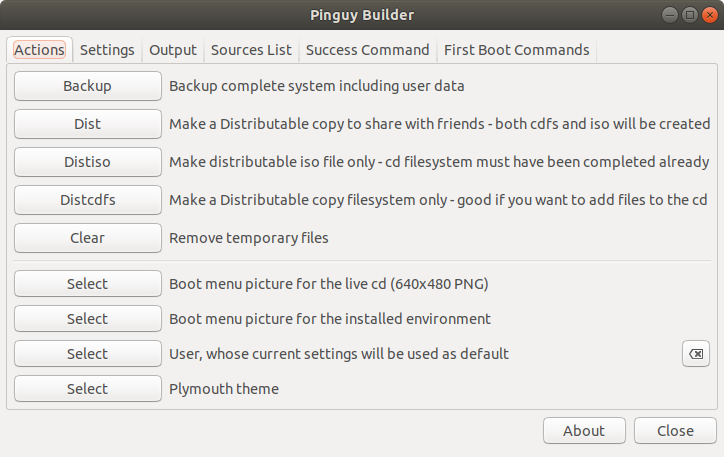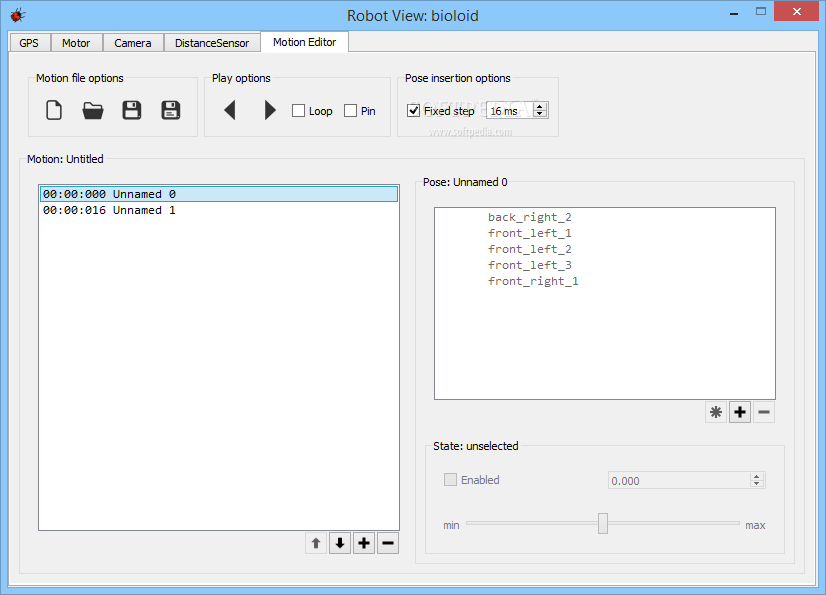

The GitHub action will automatically publish animation of your Webots simulations to GitHub Pages, so you can share them easily with your peers. Now, you can use Webots GitHub Action and in a few lines configure Webots to run your worlds in CI. Note that this function returns the position of the center of mass of the body: this may be different from the center of the Solid. Running Webots simulations in GitHub's CI has never been easier Webots GitHub Action Image. In the physics plugin you can use ODE's dBodyGetPosition function. Here is an example.Ī simulation example that shows both the GPS and the Supervisor APIs techniques is included in the Webots installation, you just need to open this world: " WEBOTS_HOME/projects/samples/devices/worlds/gps.wbt". To get the 3D position of any Transform (or derived) node placed at the root of the Scene Tree (the nodes visible when the Scene Tree is completely collapsed), you can use the wb_supervisor_field_get_sf_vec3f function.The current state of the art for odometry and LIDAR scanner based SLAM is based on graph-SLAM for localization and mapping and use grid occupancy to represent the map generated by the graph-SLAM. Please check this function's description in the Reference Manual. Those are questions you should answer in order to select the best resources and start to read them. To get the 3D position of any Transform (or derived) node using the Supervisor API: you can use the wb_supervisor_node_get_position function.Note that the GPS can also be placed on a robot's part (arm, foot, etc.) to get the world/global coordinates of that particular part. You will find more info about the GPS node and functions in the Reference Manual. Note that the GPS's resolution field must be 0 (the default), otherwise the results will be noisy. To get the position of a robot in the robot's controller code: add a GPS node to the robot, then use the wb_robot_get_device, wb_gps_enable and wb_gps_get_values functions. You will find more info about odometry and SLAM techniques in Cyberbotics' Robot Curriculum.

Slam in webots update#
This is usually more realistic because most robots don't have a GPS and therefore have no mean of precisely determining their position. Este artculo presenta un algoritmo de localizacin y mapeo simultneos (SLAM) con telmetro lser y un identificador de radiofrecuencia (RFID), con el propsito de incluir la referencia de un objeto o lugar dentro del mapa generado. The SLAM algorithm utilizes the loop closure information to update the map and adjust the estimated robot trajectory. All the functions described below will return the 3D position in meters and expressed in the global (world) coordinate system.Ĭlearly, the position of a robot can also be approximated by using odometry or SLAM techniques. Ignition, AirSim, Webots, MuJoCo, Unreal Engine, and/or Unity. There are different functions depending whether this information must be accessed in a normal controller, in a Supervisor controller or in a physics plugin. UFK, Particle Filter, PHD filter, SLAM Knowledge of feature graph optimization.


 0 kommentar(er)
0 kommentar(er)
